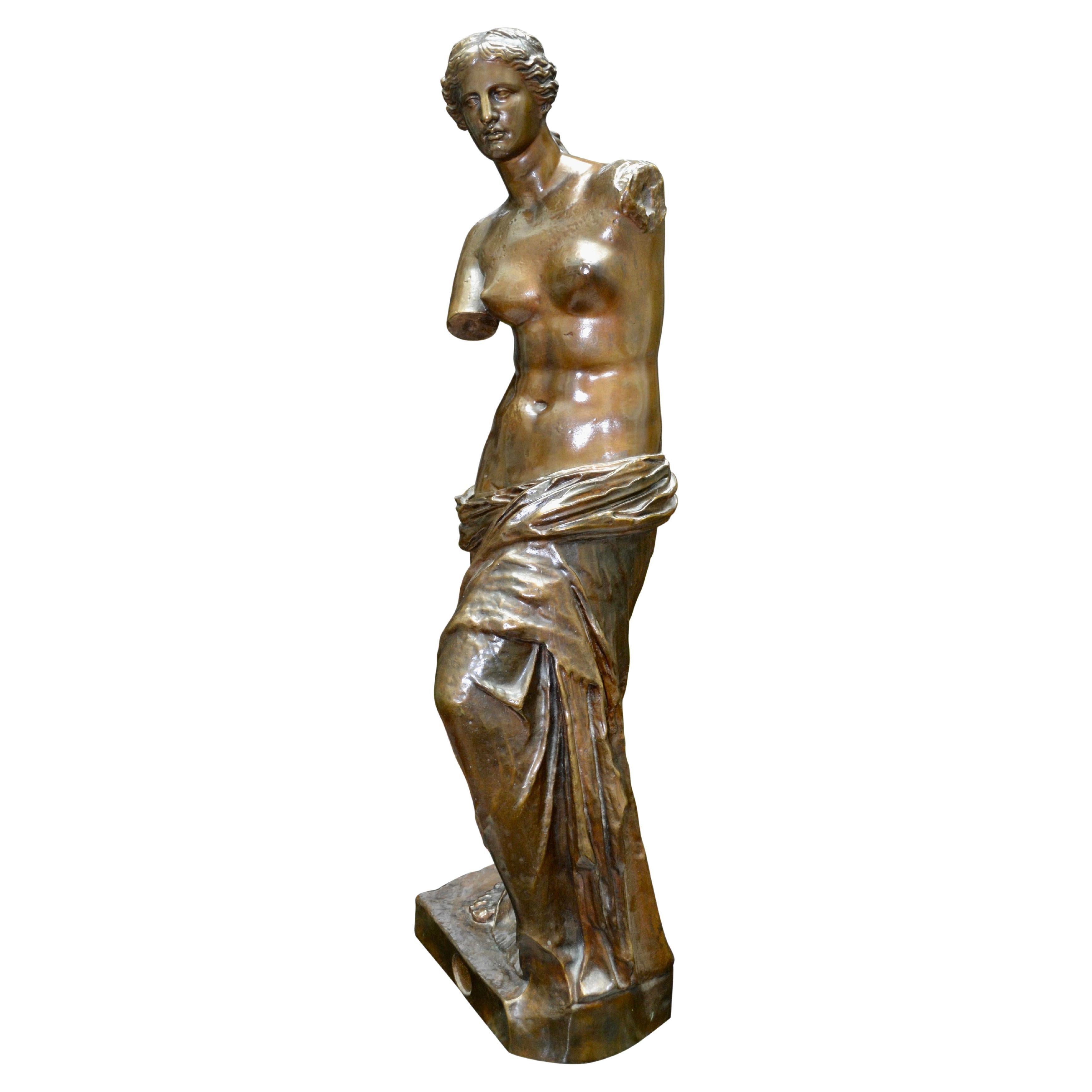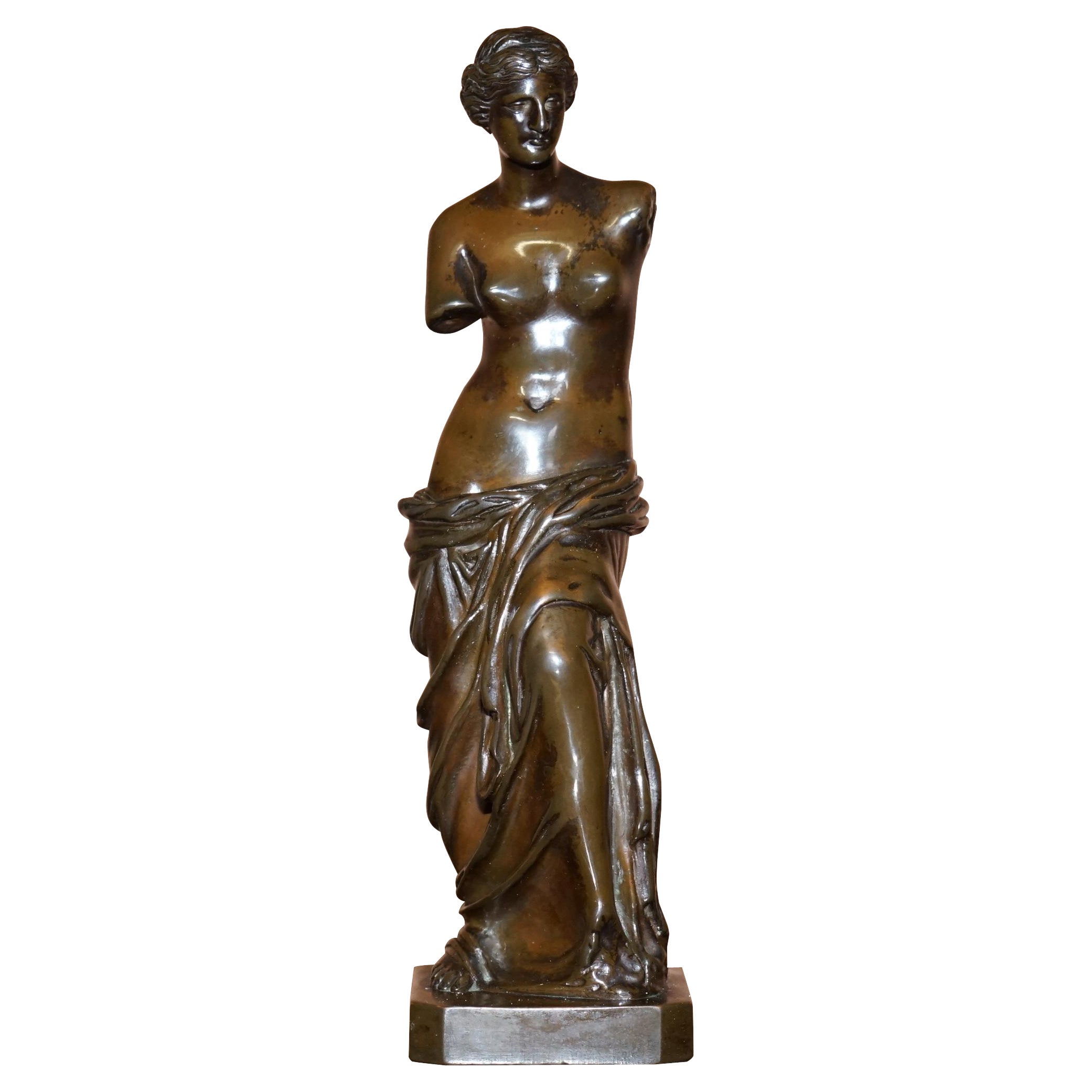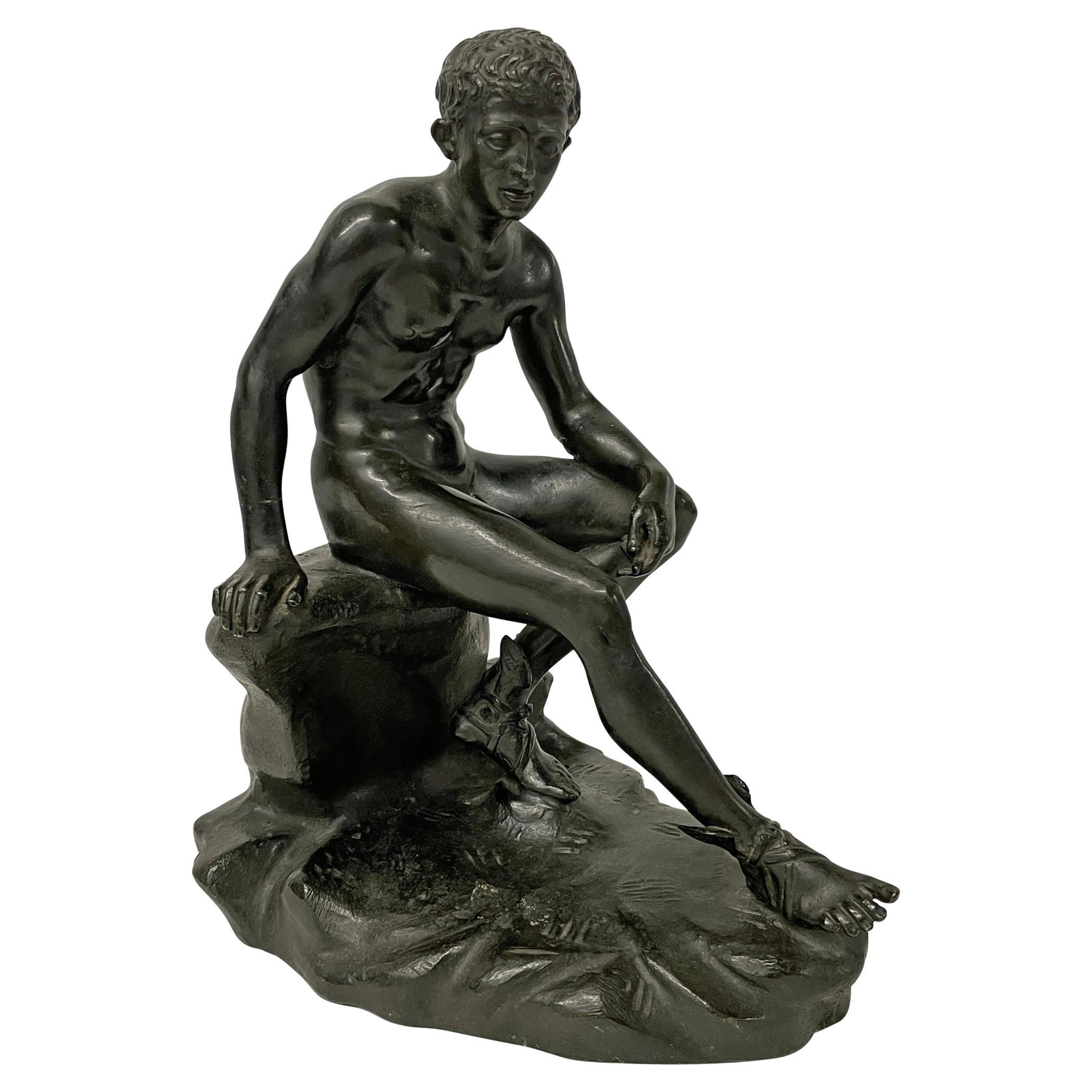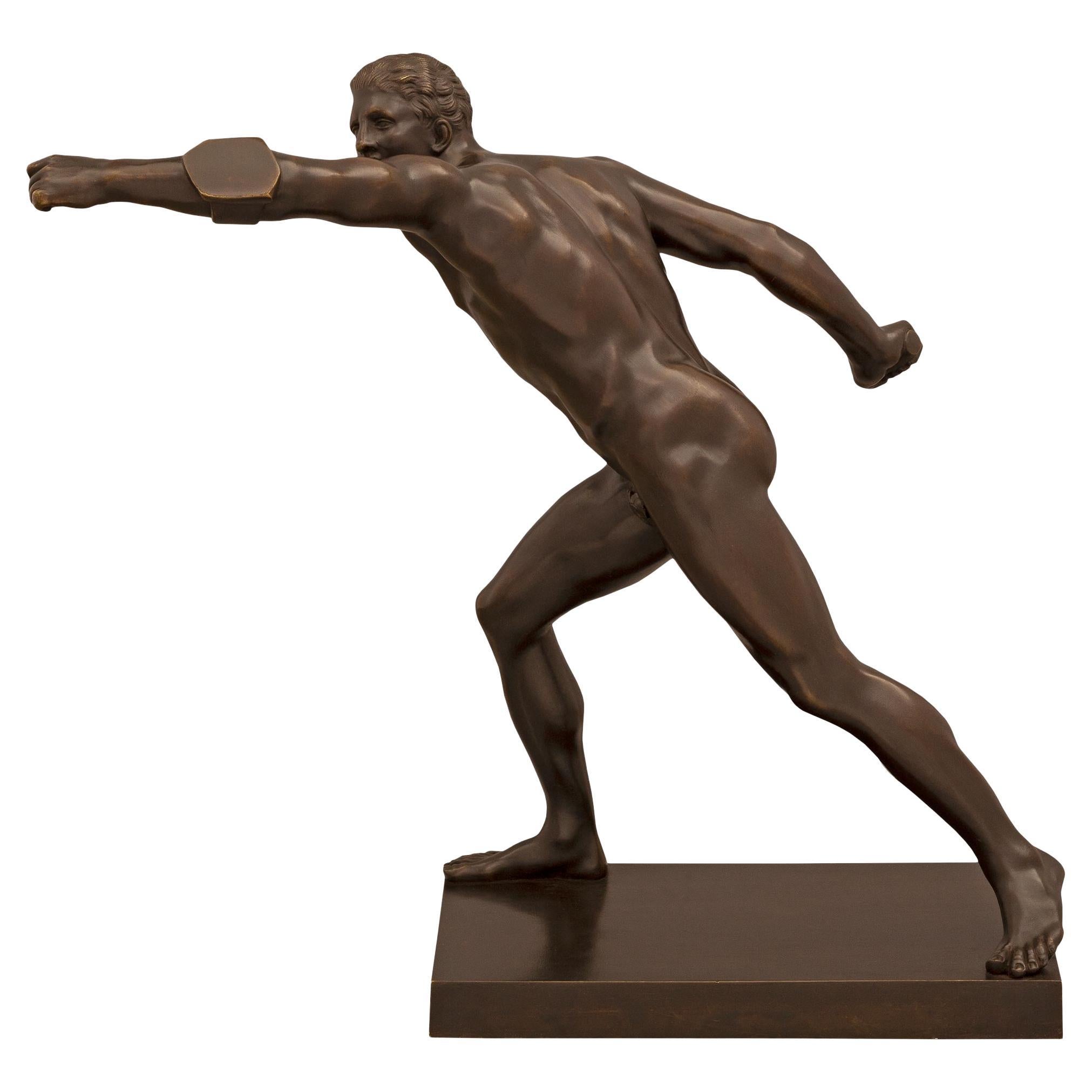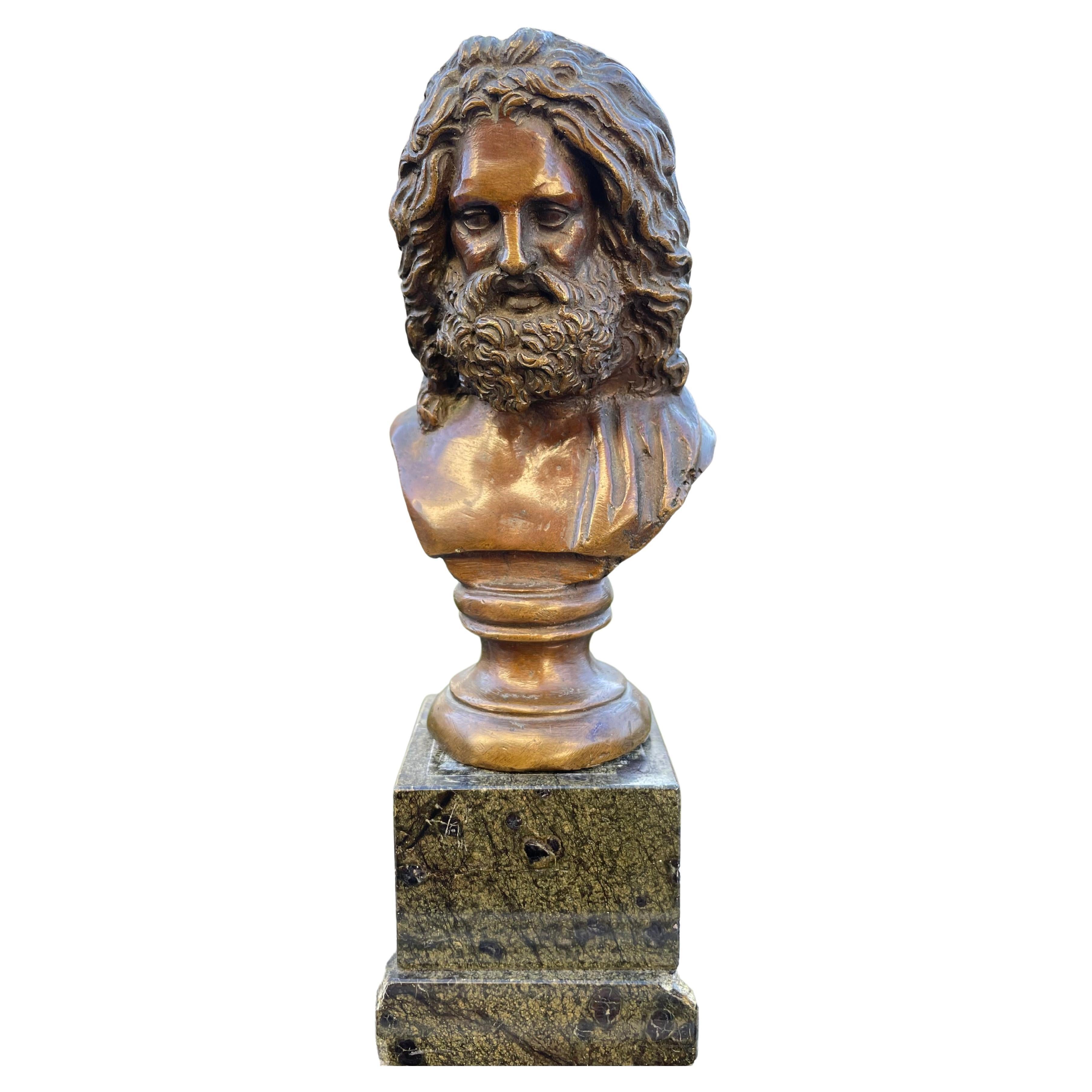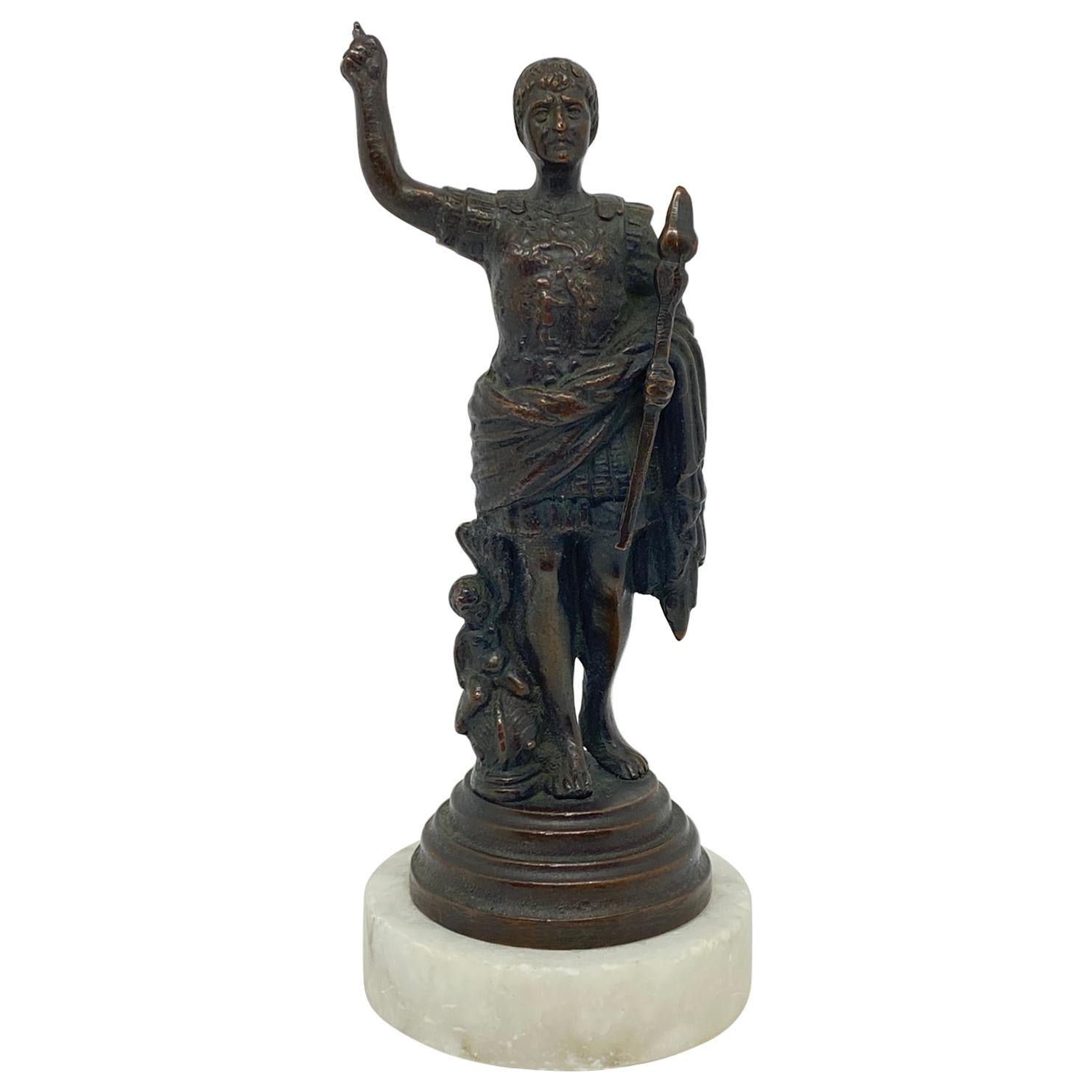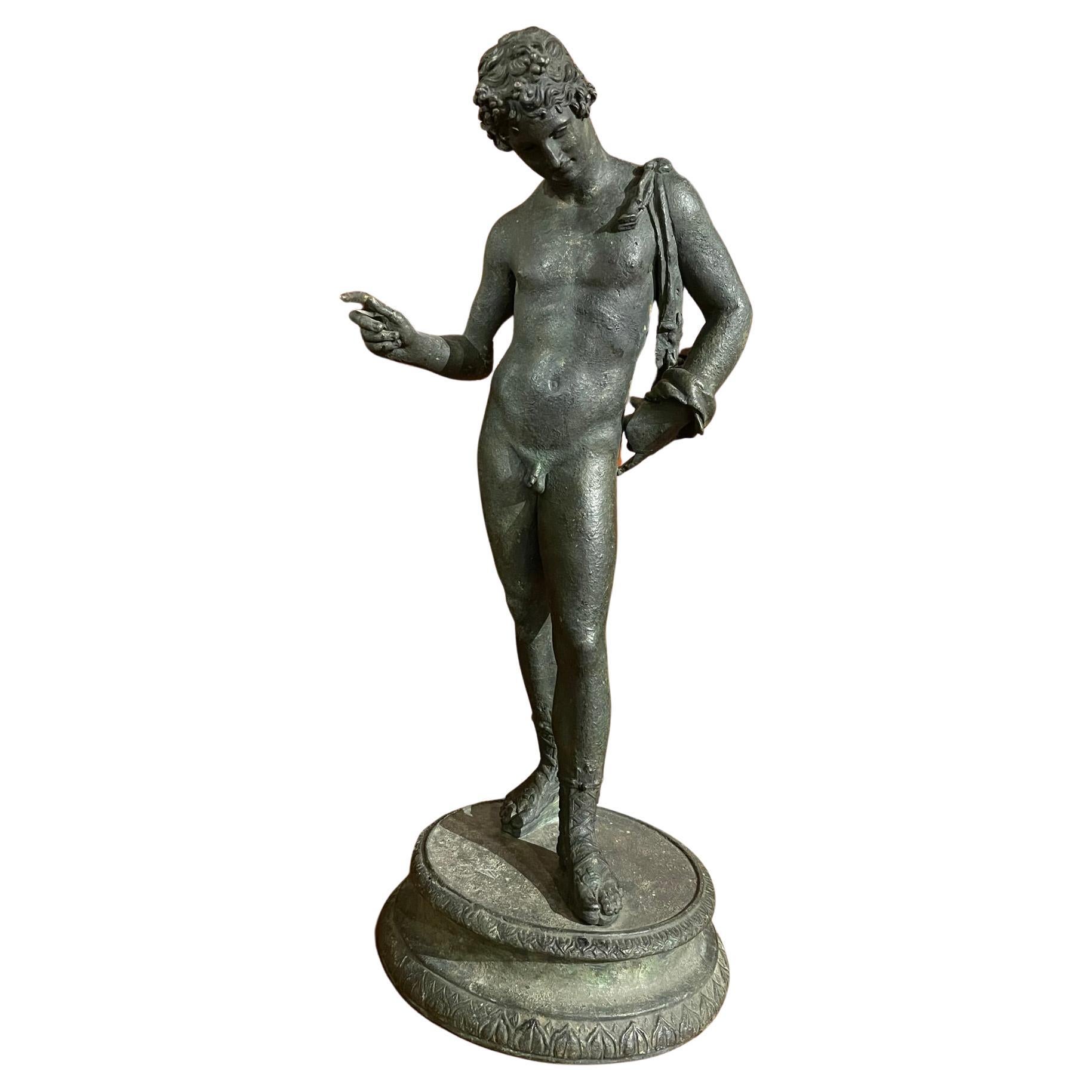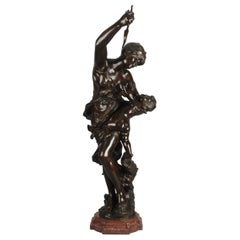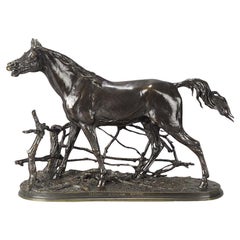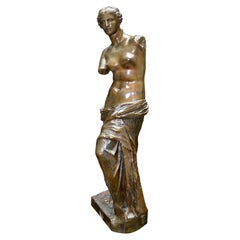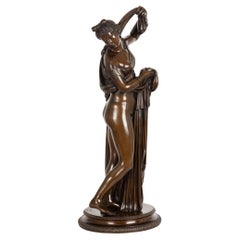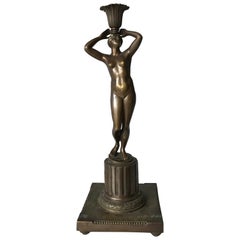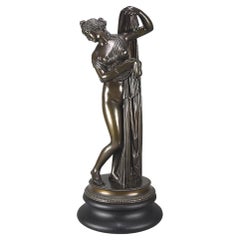
19th Century Grand Tour Italian Bronze of the 'Callypygian Venus'
View Similar Items
Want more images or videos?
Request additional images or videos from the seller
1 of 11
19th Century Grand Tour Italian Bronze of the 'Callypygian Venus'
About the Item
- Dimensions:Height: 36.23 in (92 cm)Width: 11.82 in (30 cm)Depth: 13.78 in (35 cm)
- Style:Neoclassical (In the Style Of)
- Materials and Techniques:
- Place of Origin:
- Period:1900-1909
- Date of Manufacture:1900
- Condition:Wear consistent with age and use. Please note that our items are genuine antiques with considerable age. It is therefore normal that they will show some signs of wear and handling to the surface. This change to the surface is known as 'patina' and confirms the age of the item.
- Seller Location:London, GB
- Reference Number:Seller: 77531stDibs: LU3216333729112
About the Seller
5.0
Gold Seller
These expertly vetted sellers are highly rated and consistently exceed customer expectations.
Established in 1936
1stDibs seller since 2017
63 sales on 1stDibs
More From This SellerView All
- 19th Century Art Nouveau Bronze Entitled "Venus & Cupid" by Jean Sul-AbadieBy Jean AbadieLocated in London, GBA very fine bronze study of Venus taking an arrow from Cupid her son, who at times would shoot his arrows without meaning or reason into the hearts of men, igniting their desire. Exhibiting excellent rich brown patina and good detail, signed Sul Abadie and stamped. Additional information Height: 93 cm Condition: excellent condition Circa: 1885 Materials: bronze & marble SKU: 4979 ABOUT Jean Sul-Abadie Jean Sul-Abadie (Born 1850 ~ Died 15th April 1890) was a French artist, a pupil of Jouffroy and Falguière. Specialising in bronze sculpting in the Art Nouveau style. He made his Salon debut in 1872. Cupid & Venus Different tales exist about the origin of Venus and Cupid. Some say that Venus, the goddess of love and beauty, had a love affair with Mars, the god of war. Out of this relationship, Cupid was born. In the following painting you see Venus with Mars, who is being disarmed by Cupid. Cupid has attributes from both of his parents. Like his mother he is considered to be the god of love, or more precisely, the god of falling in love. He is portrayed as an innocent little child with bow and arrows. He shoots arrows to the heart, and awakening a love that you’re powerless to resist. In classical mythology, Cupid (Latin Cupido, meaning “desire”) is the god of desire, erotic love, attraction and affection. He is often portrayed as the son of the love goddess Venus and the war god Mars, and is known in Latin also as Amor (“Love”). His Greek counterpart is Eros. Although Eros is in Classical Greek art as a slender winged youth, during the Hellenistic period, he was increasingly portrayed as a chubby boy. During this time, his iconography acquired the bow and arrow that represent his source of power: a person, or even a deity, who is shot by Cupid’s arrow is filled with uncontrollable desire. In myths, Cupid is a minor character who serves mostly to set the plot in motion. He is a main character only in the tale of Cupid and Psyche, when wounded by his own weapons he experiences the ordeal of love. Although other extended stories are not told about him, his tradition is rich in poetic themes and visual scenarios, such as “Love conquers all” and the retaliatory punishment or torture of Cupid. In art, Cupid often appears in multiples as the Amores, or amoriniin the later terminology of art history, the equivalent of the Greek erotes. Cupids are a frequent motif of both Roman art and later Western art of the classical tradition. In the 15th century, the iconography of Cupid starts to become indistinguishable from the putto. Cupid continued to be a popular figure in the Middle Ages, when under Christian influence he often had a dual nature as Heavenly and Earthly love. In the Renaissance, a renewed interest in classical philosophy endowed him with complex allegorical meanings. In contemporary popular culture, Cupid is shown drawing his bow to inspire romantic love, often as an icon of Valentine’s Day. Venus is the Roman goddess whose functions encompassed love, beauty, sex, fertility, prosperity, victory, and desire. In Roman mythology, she was the mother of the Roman people through her son, Aeneas, who survived the fall of Troy...Category
Antique Late 19th Century French Art Nouveau Figurative Sculptures
MaterialsBreccia Marble, Bronze
- 19th Century Animalier Bronze entitled "Pair of Rabbits" by Victor CheminBy Joseph Victor CheminLocated in London, GBA charming early 20th Century bronze group study of two rabbits in their natural enviroment, one enjoying a scratch as it sits at the top of a mound whilst the other rabbit sits in a more hidden area at the base on the mound. The bronze with excellent rich brown patina and very fine hand chased surafce detail, raised on a stepped base and signed Chemin ADDITIONAL INFORMATION Height: 8.5 cm Width: 10 cm Depth: 6 cm Condition: Excellent Original Condition Circa: 1890 Materials: Bronze SKU: 9010 ABOUT Victor Joseph Chemin (French, 1825 ~ 1901) Chemin was an animal sculptor. He was a pupil Antoine Louis Barye, Chemin made his salon début in Paris in 1857. He produced models of dogs, foxes and...Category
Antique Late 19th Century French Art Nouveau Animal Sculptures
MaterialsBronze
- "Djinn Étlalon Barbe" 19th Century Animalier Bronze by P J MêneBy Pierre Jules MêneLocated in London, GBA very fine French Animaliers bronze study of a stallion standing behind a post and rail fence exhibiting excellent hand finished surface detail and good...Category
Antique 1850s French Other Animal Sculptures
MaterialsBronze
- 19th Century Animalier Bronze Sculpture entitled "Standing Ostrich" by BaryeBy Alfred BaryeLocated in London, GBA very rare late 19th Century French Animalier bronze study of a standing ostrich, the detailed feathering chased with extremely fine precision, the flightless giant bird...Category
Antique 19th Century French Art Nouveau Animal Sculptures
MaterialsBronze
- 19th Century Animalier Bronze "Taureau Vainqueur" by Jean-Baptiste ClesingerBy Jean-Baptiste ClésingerLocated in London, GBAn impressive late 19th century French bronze study of a majestic bull with standing in a proud stance exhibiting excellent hand chased surface detail and fine rich brown patina. Rai...Category
Antique Mid-19th Century French Art Nouveau Animal Sculptures
MaterialsBronze
- 19th Century Animalier Bronze Sculpture entitled "Falcon" by Jules MoigniezBy Jules MoigniezLocated in London, GBAn excellent mid 19th Century French Animalier bronze study of a falcon perched on a branch using its outspread wings to balance and with its beak open. The bronze exhibiting excellent intricate hand chased surface detail and very fine rich brown lightly rubbed patination, signed J Moigniez. ADDITIONAL INFORMATION Height: 23 cm Width: 23 cm Condition: Excellent Original Condition Circa: 1870 Materials: Bronze Book reference: Animals in Bronze by Christopher Paine Page no. 79 SKU: 9000 ABOUT Jules Moigniez (French, 1835 ~ 1894) Moigniez was a French animalier sculptor of the 19th century. He worked primarily in bronze and frequently exhibited his sculptures at the Paris salon. He was best known for his bronzes depicting birds, although his skill and versatility enabled him to produce quality horse sculptures (primarily racehorses), dog sculptures and hunting scenes. His bird sculptures were among the finest ever created in his time. Moigniez was born at Senlis, Oise, France in 1835, the son of a metal gilder. Moigniez’s father bought a foundry to cast his sculptures, which was of great benefit to Moigniez as he didn’t have the added foundry costs that most of his contemporaries had to pay. Moigniez studied sculpture under the tutelage of Paul Comoléra (a student of François Rude) in Paris. It is quite likely that Moigniez’s attraction to bird sculpture was a direct result of his education under Comoléra, who was himself a bird specialist. Over the course of his 40-year sculpting career Moigniez exhibited thirty works at the Salon between 1855–92. His first submission in a major art exhibition was his plaster, Pointer Stopping at a Pheasant, at the Exposition Universelle of 1855.[1][2] Moigniez was known for the fine detail and chiseling of his sculptures. His bronzes—usually cast using the lost wax method—were always immaculately chased and patinated, and were especially popular in England and Scotland.[2] More than half of his output during his lifetime was sold in the United Kingdom. By the end of the 19th century, his sculpture had become popular in the United States as well. In contrast with other animaliers of the period such are P.J. Mêne and Antoine-Louis Barye, Moigniez’s bird sculptures often incorporated highly detailed bases complete with bushes, extensive foliage and undergrowth. His castings were generally of excellent quality with a variety of patinas, the gilded and silvered patinas being the most desirable and sought after by collectors. His bronzes could be reproached for an excess of detail, a result of overly-finicky, over-worked chiseling. Moigniez received redemption, however, by portraying in his sculpture a certain “elegance of attitudes”. His Chien braque...Category
Antique Mid-19th Century French Art Nouveau Animal Sculptures
MaterialsBronze
You May Also Like
- 19th Century Grand Tour Bronze Statue of Venus of MiloLocated in Vancouver, British ColumbiaA very fine Grand Tour bronze study of the famous Venus de Milo with excellent rich brown patina and good hand finished surface detail. The casting is unusual in that it does not pretend to hide the many imperfections on the original. It is signed on the base with "Reduction Mechanique Ronald Collas, and for the foundry F.Barbidienne Fondeur. Foundry stamp on the base Considered by any to be the most beautiful Hellenistic statue to survive fro antiquity, the Venus of Milos...Category
Antique Late 19th Century French Neoclassical Figurative Sculptures
MaterialsBronze
$5,625 Sale Price25% Off - 19th Century Grand Tour Bronze Sculpture “Callipygian Venus” of AntiquityLocated in Shippensburg, PAGRAND TOUR MODEL AFTER ANTIQUITY Naples, Italy (19th Century) "The Callipygian Venus" Sand-cast and patinated bronze signed foundry mark in the base "Fonderia Artistica Sommer Nap...Category
Antique 19th Century Italian Grand Tour Figurative Sculptures
MaterialsBronze
- Late 19th Century Grand Tour Italian Bronze Sculpture of Nude Venus CandlestickLocated in Lisse, NLElegant and highly stylish candlestick or table lamp. This handcrafted and heavy quality, bronze candle stick or table lamp from the 1890-1910 era is in very good condition. This ro...Category
Antique Late 19th Century Italian Grand Tour Table Lamps
MaterialsBronze
- 19th Century French Grand Tour Venus de Milo BronzeLocated in Chicago, ILA striking and alluring 19th century French Grand Tour cast bronze sculpture depicting the Ancient Greek goddess Aphrodite, and named for her Roman counterpart, Venus. The original was discovered in 1820 on the island of Milos, hence the name Venus de Milo, and is now housed in the Louvre in Paris. The Grand Tour became a right-of-passage during the 17th-19th centuries for the upper class serving to educate men and boys in classical art and architecture found throughout the European continent. Bronzes of this scale were brought back to England as souvenirs. This piece is marked "FRANCE" on the backside, and "Musée de Louvre...Category
Antique 19th Century French Classical Greek Figurative Sculptures
MaterialsBronze
- Lovely 19th Century Antique Italian Venus De Milo Grand Tour Bronze StatueLocated in GBWe are delighted to offer for sale this stunning late 19th century Italian grand tour Venus De Milo statue A very good looking and decorative piec...Category
Antique 19th Century Italian Victorian Figurative Sculptures
MaterialsBronze
- 'Seated Hermes', a 19th Century Italian Grand Tour BronzeLocated in Chicago, ILAn extraordinary and wonderfully rendered 19th century Italian cast bronze depicting a seated Hermes, the Greek god of messengers, travelers, and merchan...Category
Antique 19th Century Italian Grand Tour Figurative Sculptures
MaterialsBronze
Recently Viewed
View AllMore Ways To Browse
Head Of The Charles
Rome Grand Tour
Antique Clothing 19th Century
Bourbon Room
Bronze Fragments
Marbles Antique
Antique Naples
Antique Wooden Plinth
16th Century Italian Cabinet
16th Century Cabinet Italy
Bronze Head Roman
16th Century Italian Cabinet
Antique Pennies
Antique Penny
Antique Pennys
Antique Evaluator
Antique Italian Fragment
17th Fragment
